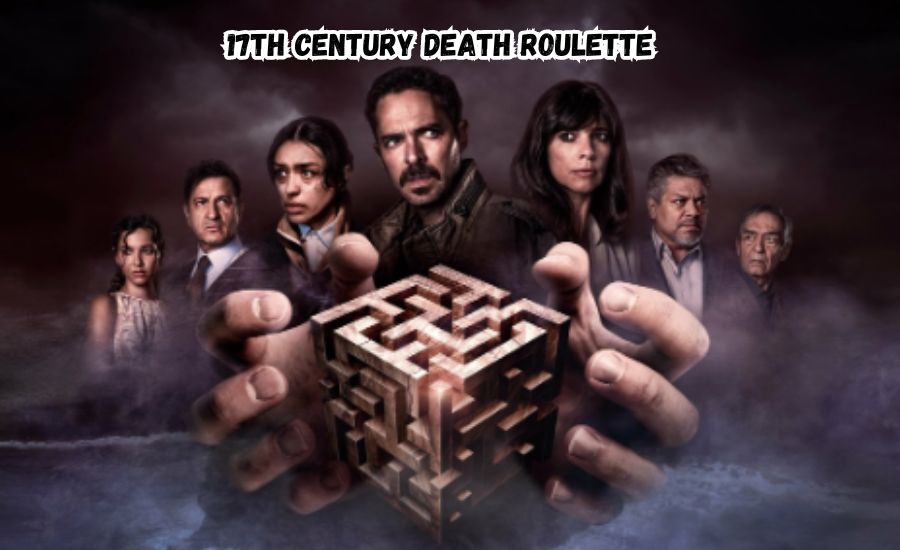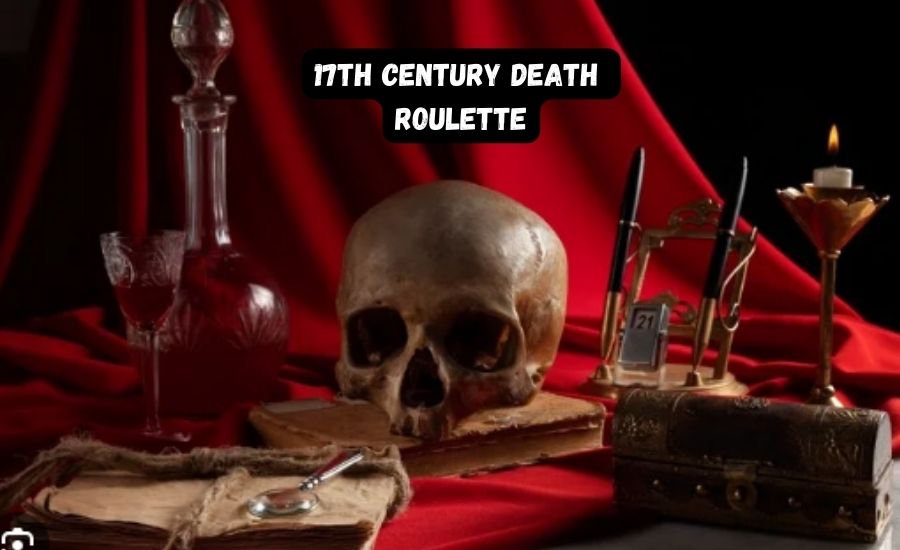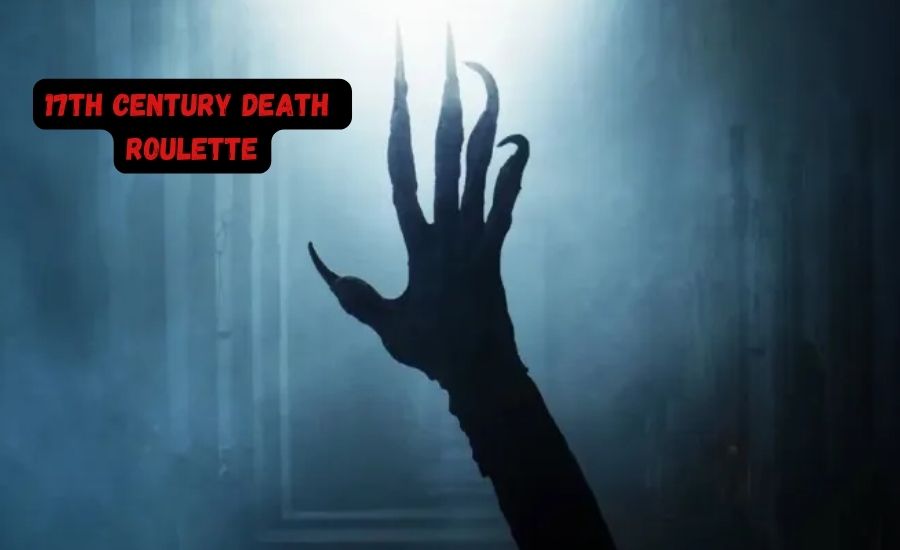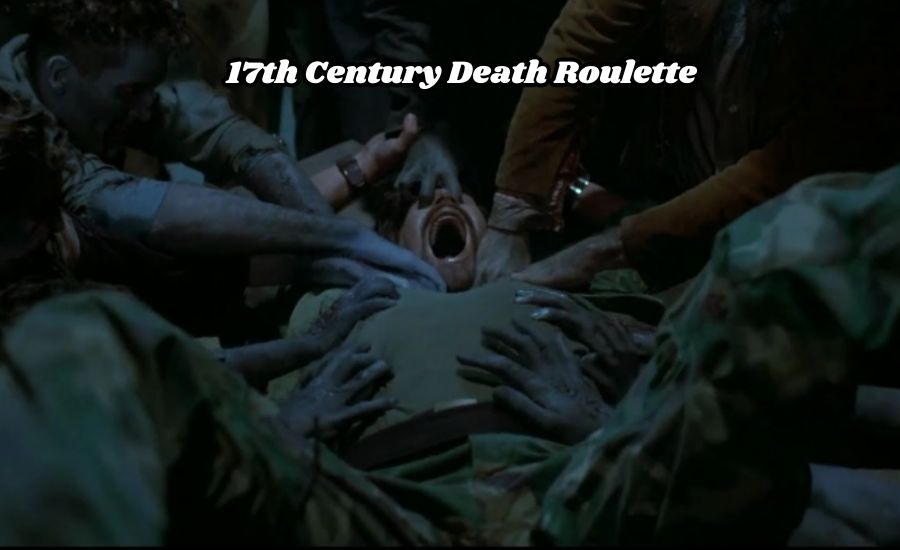17th Century Death Roulette: A Dangerous Game of Chance

What Was 17th Century Death Roulette?
The 17th century death roulette was a game that mixed chance and danger in a very extreme way. Unlike today’s games, where losing might just mean losing some money, this game had much higher stakes. In the 17th century, people played death roulette with a real pistol and a spinning wheel. The goal was to spin the wheel, which would point to a chamber of the gun. Sometimes, the gun was loaded with a bullet, and other times, it was empty.
Players would take turns aiming the gun at themselves and pulling the trigger. The spinning wheel made it all about chance. If the wheel landed on a chamber with a bullet, it could be deadly. If it landed on an empty chamber, they would survive to play another round. This risky game tested not just luck but also a person’s bravery. The name “death roulette” came from the fact that you might face death with just one wrong turn of the wheel.
In those days, such games reflected how people dealt with fear and uncertainty. Life in the 17th century was full of dangers from wars, diseases, and accidents. Playing death roulette was a way for some to confront their fears directly. It wasn’t just about having fun; it was also about showing how fearless or daring they could be.
How 17th Century Death Roulette Was Played
Playing the 17th century death roulette involved some simple but dangerous equipment. The main piece was a pistol with only one bullet loaded. The gun was placed on a spinning wheel or a similar device. Players took turns spinning the wheel, which would randomly point to different chambers of the gun. Each chamber could either be empty or contain the deadly bullet.
Once the wheel stopped spinning, the player would aim the gun at themselves and pull the trigger. If the chamber had a bullet, the result was tragic. If it was empty, the player survived and could go another round. This game had no real winners, just people daring enough to risk their lives. The tension and excitement of waiting to see if the bullet would fire made it a thrilling but deadly game.
The rules of death roulette were very straightforward but incredibly dangerous. There were no complicated strategies or tricks, just pure chance. The game’s simplicity added to its thrill, as each spin of the wheel could mean life or death. This made it both a game of chance and a test of courage, where the ultimate prize was just surviving the next round.
The Dark Origins of 17th Century Death Roulette

The origins of the 17th century death roulette are shrouded in mystery, but it is believed to have emerged from a period filled with danger and uncertainty. During the 17th century, Europe was a continent at war, grappling with disease and social upheaval. This turbulent environment gave rise to many dark and risky pastimes, including death roulette.
The exact beginnings of this game are unclear, but it likely came from the harsh realities of the time. People faced daily dangers from wars, diseases, and political instability. In such a world, death roulette may have been a way for people to confront their fears head-on. It also served as a form of extreme entertainment for those who had the means and the courage to play.
As with many dangerous games from history, death roulette reflected the social and cultural attitudes of its time. It was a way for people to deal with the constant presence of death in their lives. By playing such a high-risk game, participants could demonstrate their bravery and defiance in a world that offered little security.
Who Played 17th Century Death Roulette?
The 17th century death roulette was not a game for everyone; it was mainly played by the wealthy and adventurous. Those who participated in death roulette were often aristocrats or soldiers who sought extreme thrills. The game was popular among people who had the means to indulge in such dangerous pastimes and who wanted to prove their courage.
Participants in death roulette were usually driven by a mix of bravado and existential curiosity. For some, it was a way to test their mettle and show off their bravery in a dramatic fashion. For others, it was a form of escapism from the harsh realities of their lives. The game’s popularity was driven by a desire to confront death directly and experience the adrenaline of high-stakes gambling.
This deadly game was also a way for players to make bold statements about their personal courage and defiance of societal norms. By engaging in such a risky activity, they could challenge the expectations and limitations placed upon them. The allure of death roulette lay in its extreme nature and the opportunity it provided to face mortality in a controlled but thrilling way.
The Thrill and Danger of 17th Century Death Roulette

The thrill of 17th century death roulette came from its high stakes and the intense anticipation it created. Each spin of the wheel brought a mix of fear and excitement, as players never knew if they would face a deadly bullet or an empty chamber. This combination of chance and danger made the game both exhilarating and terrifying.
Participants were drawn to death roulette for the adrenaline rush it provided. The possibility of facing death head-on was a powerful motivator for those seeking a dramatic and risky form of entertainment. This thrill-seeking behavior was a way to escape the monotony of everyday life and engage in something far more extreme.
The danger of death roulette was not just physical but also psychological. The mental challenge of facing such a high risk added to the game’s allure. The sense of impending doom and the uncertainty of the outcome created a unique and intense experience that fascinated those who played. Despite its grim nature, the thrill of the game kept people coming back for more.
How 17th Century Death Roulette Reflects Society’s Fears
The 17th century death roulette reflects the fears and anxieties of its time. Life in the 17th century was often fraught with dangers from wars, diseases, and social instability. The game allowed people to confront their fears in a dramatic and direct way. By playing death roulette, participants faced the possibility of death, reflecting their society’s struggles with mortality and uncertainty.
The game also mirrored the existential anxiety felt by many during this period. With death being a constant threat, engaging in death roulette offered a way to wrestle with this fear. It was a way for individuals to feel a sense of control over their fate, even if it was only an illusion created by the game’s rules.
In addition, death roulette highlighted the societal fascination with bravery and risk-taking. In a time when displaying courage was highly valued, participating in such a dangerous game was a way to prove one’s bravery. The game’s popularity among the wealthy and adventurous shows how societal values influenced the types of entertainment people sought.
The Decline of 17th Century Death Roulette

The decline of 17th century death roulette came as society began to change and evolve. As firearms technology advanced and societal attitudes shifted, the practice of playing death roulette became less common. The game’s brutal nature and the increasing awareness of its dangers contributed to its decline.
In the 18th century, new forms of entertainment and social activities began to emerge. These were often less violent and more refined than the deadly games of the previous century. The rise of more regulated and less risky pastimes made death roulette seem increasingly out of place.
The fading interest in death roulette also reflected broader changes in social attitudes. As people became more aware of the moral implications of such games, the practice fell out of favor. The game’s decline marked a shift towards more humane and socially acceptable forms of entertainment, leaving death roulette as a dark chapter in history.
The Impact of 17th Century Death Roulette on Culture
The impact of 17th century death roulette on culture can still be seen in various forms of art and literature. The game’s dramatic and dangerous nature captured the imagination of many, inspiring stories and artworks that reflected its grim allure. Death roulette became a symbol of the era’s fascination with risk and mortality.
In literature and art, death roulette often represents the darker side of human nature. The game’s themes of chance and danger are used to explore deeper psychological and existential issues. This cultural impact has helped keep the story of death roulette alive, even as the practice itself has faded into obscurity.
Today, death roulette continues to be a subject of fascination and study. Its influence can be seen in modern media, where themes of risk and mortality are frequently explored. The game’s legacy serves as a reminder of the enduring human fascination with confronting danger and the unknown.
Comparing 17th Century Death Roulette to Modern Games
Comparing 17th century death roulette to modern games reveals both similarities and differences. While death roulette involved life-or-death stakes, modern games often focus on risk and excitement without the same level of danger. Both types of games appeal to people’s love of thrill and chance, but modern versions are usually much safer.
Today’s gambling and thrill-seeking activities often involve financial risk rather than physical danger. The excitement of risking money or reputation can be compared to the thrill of playing death roulette, but without the life-threatening consequences. This evolution shows how our understanding of risk and entertainment has changed over time.
Despite these differences, the core appeal of both death roulette and modern games lies in the chance and uncertainty they offer. The way people seek excitement and confront risk has shifted, but the fundamental attraction to high-stakes games remains a common thread.
Famous Stories About 17th Century Death Roulette
Famous stories about 17th century death roulette offer a glimpse into the game’s dramatic and dangerous nature. Historical accounts and folklore often highlight the extreme risks and the boldness of those who played. These stories reflect the high stakes and the fascination people had with such risky pastimes.
One famous tale involves a nobleman who reportedly played death roulette to prove his bravery. The story goes that he survived several rounds, showcasing his courage and defiance. Such stories were often exaggerated but captured the spirit of the game and its appeal to those seeking to make a dramatic statement.
These legendary accounts have contributed to the mystique of death roulette. They show how the game’s reputation as a test of courage and chance has been remembered and retold over the centuries. The stories help keep the memory of this dark pastime alive in popular culture.
The Psychological Appeal of 17th Century Death Roulette

The psychological appeal of 17th century death roulette lies in its ability to confront deep-seated fears and anxieties. Playing the game involved facing the possibility of death, which created a unique psychological challenge. The game’s danger and unpredictability attracted those seeking to test their mental and emotional limits.
For many participants, death roulette offered a way to deal with the constant presence of mortality. The thrill of risking one’s life was a way to confront the fear of death directly. This intense experience provided a form of catharsis and a way to feel a sense of control over an otherwise uncontrollable fate.
The game’s appeal also stemmed from the psychological excitement of chance and uncertainty. The suspense of waiting to see if the gun would fire created a powerful adrenaline rush. This combination of fear and excitement made death roulette an intriguing and memorable experience for those who played.
You Must Read: Morgan-Macgregor
How 17th Century Death Roulette Was Remembered
The memory of 17th century death roulette has been preserved through various forms of historical records and cultural references. While the game itself declined in popularity, its impact on history and culture has been documented in literature and art. These records provide insight into how the game was viewed and remembered by those who lived through it.
Historical accounts often highlight the game’s dangerous and dramatic nature. These records help us understand why death roulette was both feared and fascinating. The game’s legacy has been preserved through stories and artifacts that capture the essence of its risky and daring spirit.
The cultural references to death roulette have helped keep its memory alive. Modern media often draws on the themes of chance and danger seen in death roulette. This ongoing fascination with the game reflects its lasting impact on how we think about risk and mortality.
Lessons We Can Learn from 17th Century Death Roulette
The 17th century death roulette teaches us several lessons about human nature and risk. One key lesson is the way people confront their fears. The game’s extreme nature reflects a desire to face mortality directly and to challenge one’s own courage. This can help us understand how people deal with fear and uncertainty.
Another lesson from death roulette is the impact of high-stakes games on society. The game’s popularity among the wealthy and adventurous shows how social values influence entertainment. It also demonstrates how risky activities can become symbols of bravery and defiance.
Finally, the decline of death roulette shows how societal attitudes towards risk and entertainment change over time. As people’s understanding of safety and morality evolved, the game became less acceptable. This shift highlights how our views on risk and entertainment can shape the types of activities we pursue.
Modern Media’s Take on 17th Century Death Roulette
Modern media often explores themes similar to those found in 17th century death roulette. Films, books, and other media draw on the excitement and danger of high-stakes games. These modern interpretations reflect the lasting fascination with risk and mortality that death roulette exemplified.
Media portrayals of risky games often emphasize the thrill and suspense that made death roulette intriguing. By depicting similar themes in a less dangerous context, modern media continues to engage audiences with the excitement of chance and uncertainty. This shows how the essence of death roulette remains relevant in contemporary storytelling.
Despite the dangerous nature of the original game, modern media often explores its themes in a safer and more controlled manner. This allows audiences to experience the thrill of risk without the actual danger. The legacy of death roulette lives on through these modern interpretations, highlighting its impact on popular culture.
Conclusion
The 17th century death roulette was a truly wild and risky game that shows how people once faced danger for thrills. Playing with a real gun and a spinning wheel, players risked their lives for excitement and to prove their bravery. While it was a game that might seem crazy today, it reflected the fears and challenges of the time.
Even though death roulette is no longer played, it still captures our imagination. Its legacy lives on in stories and media, reminding us of how people used to deal with uncertainty and danger. The game’s mix of chance and risk makes it a memorable part of history, showing us just how far people were willing to go for a thrill.
Discover More: Vladislava-Gagan
FAQs
Q: What was the 17th century death roulette?
A: The 17th century death roulette was a dangerous game where players used a gun loaded with one bullet and spun a wheel. They would point the gun at their heads and pull the trigger, risking their lives for excitement.
Q: Why did people play death roulette in the 17th century?
A: People played death roulette to prove their bravery, seek thrills, and escape the harsh realities of their lives. It was also a way to make bold statements against societal norms.
Q: How did the game of death roulette work?
A: In death roulette, players would take turns spinning a wheel that determined if the gun would fire. They would point the gun at themselves and pull the trigger, with the risk of a fatal shot depending on the wheel’s outcome.
Q: Was death roulette a popular game?
A: Death roulette was not widely popular but was known among certain circles, especially among the nobility and soldiers who sought extreme forms of entertainment.
Q: How did society view death roulette?
A: Society had mixed views on death roulette. Some saw it as a test of courage, while others considered it a morbid and dangerous practice that reflected poorly on those who participated.
Q: Why did death roulette decline?
A: The game declined due to increasing awareness of its brutality, changing social attitudes, and advancements in firearms technology, which made the game less practical and acceptable.
Q: Is death roulette still practiced today?
A: No, death roulette is no longer practiced today. It has been replaced by safer forms of entertainment, and its practice has largely been forgotten.Q: How has death roulette influenced modern culture?
A: Death roulette has influenced modern culture by inspiring references in literature, films, and media. It serves as a symbol of risk and mortality, reflecting humanity’s fascination with dangerous games.






